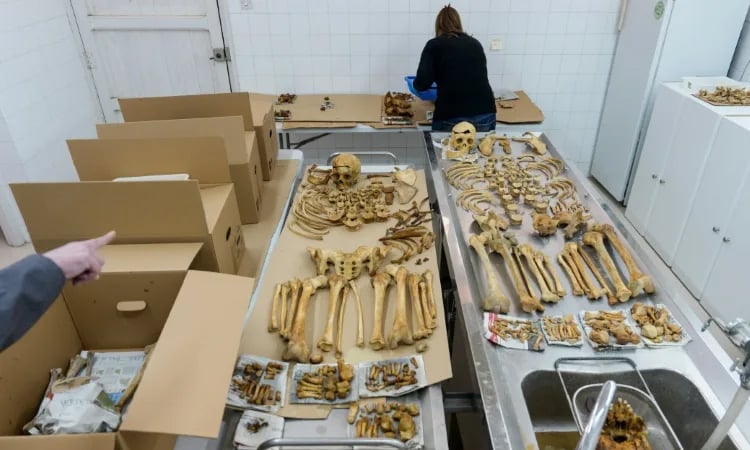News Flash
News Flash

EJEA DE LOS CABALLEROS, Spain, Nov 10, 2025 (BSS/AFP) - At 88, Maria Jesus Ezquerra is racing against time to recover the remains of her father, killed at the start of the Spain's 1936-1939 civil war and buried in a mass grave, so she can finally lay him to rest beside her mother.
"It's my only dream, after that, I can die," she said, tears streaming down her face.
"I have always loved my father very much, even without knowing him," she adds, sobbing in the living room of her home in Pinsoro, a village of around 600 residents in the northeastern region of Aragon.
Her father, Jesus Ezquerra, a 38-year-old labourer and Socialist councillor, was arrested in Aragon shortly after a nationalist military coup in 1936 that sparked the war.
Despite fearing reprisals from rightist forces, he was unwilling to flee and leave his wife -- who was pregnant with Maria Jesus -- and four children behind.
Two days later, he was buried in a common grave in the cemetery of the nearby town of Ejea de los Caballeros alongside an estimated 150 others.
Exhumation work has just begun at Ejea, and Maria Jesus is one of the few surviving children of victims, increasing the chances of identifying her father through DNA testing.
- Around 114,000 missing -
General Francisco Franco assumed power after the civil war in which his Nationalists defeated Republicans, leaving the country in ruins and mourning hundreds of thousands of dead.
While his regime honoured its own dead, it left its opponents buried in unmarked graves across the country.
As Spain marks the 50th anniversary of Franco's death on November 20, 1975, these graves still scar Spain's landscape.
Socialist Prime Minister Pedro Sanchez's government estimates there are over 3,300 mass graves from the civil war and about 140,000 missing persons.
The largest mass grave is in an imposing monument near Madrid initially called The Valley of the Fallen where 33,000 bodies from both sides of the conflict were interred, many without family consent.
Franco, who died in 1975, was buried at the site but in 2019 the government exhumed his remains and relocated them to a more discreet family vault.
After Franco's death, some families began recovering the remains of their relatives, though it was often possible only when the burial sites were known.
- 'Take time' -
A 2022 law made the Spanish state responsible for exhumations, but much of the work continues to be carried out by organisations such as the Asociacion Memoria Historica Batallon Cinco Villas, which is leading the search at the Ejea cemetery.
"We expect the project to last around two years because it requires significant resources," said Javier Sumelzo, 42, the secretary of the association.
"DNA testing will take time as well," he added.
Javier Ruiz, 56, an archaeologist leading the excavation, said there is still no national genetic database to help identify remains as envisioned under the 2022 law, with only several unconnected regional databases currently in place.
"The worst part is opening a grave and being unable to identify almost anyone. Time only makes it harder," he said as he stood by the grave, where skeletons could be seen.
Without the DNA of children -- most of whom have now died -- experts must rely on lateral genetic lines from more distant relatives, which is harder, Ruiz said.
Only 70 of the 9,000 bodies exhumed over the past five years -- less than 1.0 percent -- have been returned to families, government data shows.
- Closing wounds -
Cristina Sanchez, 34, a forensic archaeologist on the Ejea team, works closely with relatives to collect information that can help identify remains.
"Sometimes families send us photos, or tell us if someone had a limp, wore glasses, or had a particular feature," she said.
"You can get clues, but DNA testing is essential. Otherwise, you risk giving people false hope."
Conchita Garcia, Maria Jesus' daughter who has spent years seeking her grandfather's remains, said "these exhumations do not reopen wounds, they close them."
Three cousins in the 60s -- Ramon, Marivi, and Paquita -- agree.
Their grandfather, Eusebio Fenolle Miguel, killed in 1936, was recently identified after being exhumed from a nearby village, and reburied alongside his wife in the same grave, covered in a wedding photo.
Recovering his remains was "a relief, because you have found someone you never knew, but whom you loved," Ramon said as he visited the grave with his cousins.